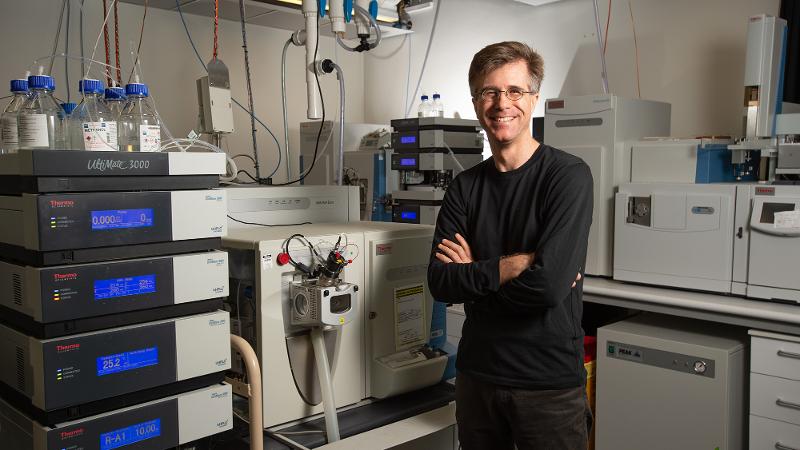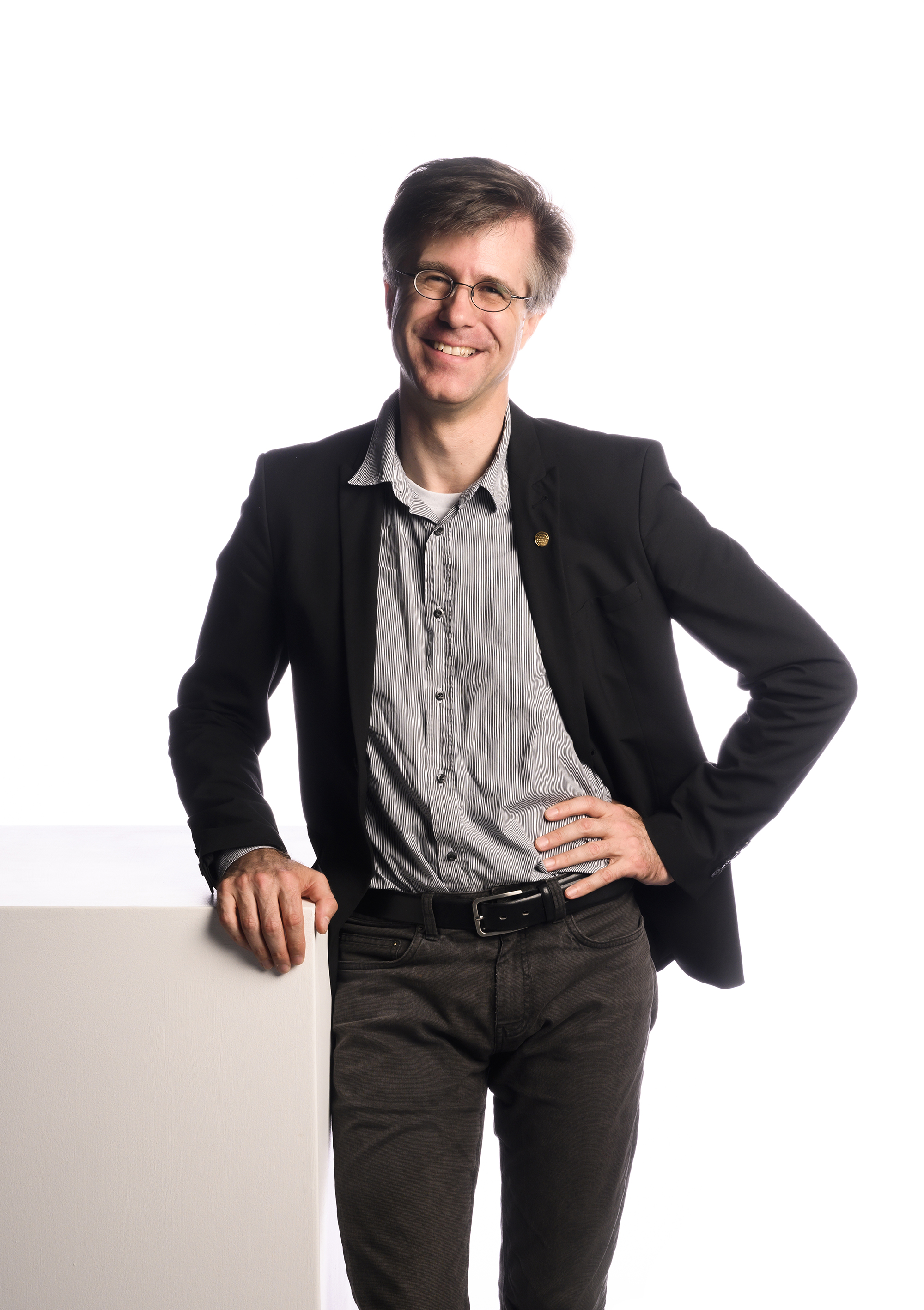
This year’s recipient of Australia’s highest prize for chemistry, QUT’s Professor Christopher Barner-Kowollik, has highlighted the need for fundamental, curiosity-driven discovery free from political interference and a public funding policy that enhances, rather than limits, the scientific process.
The Australian Academy of Science has named Professor Barner-Kowollik as the recipient of the David Craig Medal for 2022. This prestigious Australian award also coincides with him receiving the 2022 European Polymer Federation Prize, Europe’s highest honour in polymer science, which will be awarded to him in Prague later this year.
Professor Barner-Kowollik, a principal investigator within QUT’s Centre for Materials Science, Australian Research Council Laureate Fellow and Deputy Vice-Chancellor (Research), is a world-leading soft matter nanotechnologist, whose career is focused on the power and possibilities of light in materials science.
“Science is a team effort, fusing individual efforts,” Professor Barner-Kowollik said.
“Over the past 20 years, I have advised over 170 PhD students and postdoctoral fellows, and all of them critically contributed to advance our understanding of how large molecules are formed and controlled with light.
“A scientific idea is not a function of the person who says it. Whether a first-year PhD student, an honours student or an esteemed Professor advance a scientific idea, there’s no principal difference in the quality of the idea.
“Effective science works with very flat hierarchies. You need to empower and sponsor the next generation of scientists.
“These awards reflect more than 20 years of intense science, discussions and building diverse teams as well as sticking with a theme. They are about the free flow of ideas not limited by national borders, synthesizing them into something more than their individual parts.”
Professor Barner-Kowollik said just as senior researchers need to foster early and mid-career researchers, the systems that fund our scientific discoveries need to have the flexibility to foster discovery rather than limit it.
“Science is a highly non-linear process. In research grants, you have to make plans, but what you describe in a grant is merely a starting point and it might diverge in quite different directions,” Professor Barner-Kowollik said.
“Effective funding schemes realize that strict milestones, bean counting, and deliverables kill the scientific process.
“The majority of discoveries have been made by giving outstanding scientists the freedom to follow their ideas unhindered over long periods of time. Governments focused on growing a nations prosperity forget this at their peril.
“In addition, science takes time, so to demand results on a political level within three years or even five years for something that would have a long-lasting societal impact is very short-sighted.
“If you're investing into science, you need to have a 15-to-20-year time horizon.”
QUT Vice-Chancellor Professor Margaret Sheil welcomed the announcement of the two awards for Professor Barner-Kowollik.
“The recognition by the Australian Academy of Science and the European Polymer Federation is a testament to his international standing in macromolecular photochemistry as well as mentoring emerging research talent in his team,” Professor Sheil said.

“QUT is particularly pleased that Professor Barner-Kowollik also leads QUT’s research strategy as Deputy Vice Chancellor Research by setting the highest research quality standards in both fundamental and applied research with a clear vision for QUT’s research ambitions.”
Throughout his career, Professor Barner-Kowollik has been driven by curiosity around the power and possibilities of light in macromolecular chemistry.
“The fascination from light comes simply from the fact that it's it is the most important ingredient to life on Earth, Professor Barner-Kowollik said. “Without sunlight, there is no life on Earth.
“Light is fascinating itself because depending on the experiment or the question you asked, it can either present as a particle or wave.”
Professor Barner-Kowollik said people intuitively think of sunlight at the root of many different beneficial processes, such as photosynthesis in plants.
But in the labs of QUT, his team is using light at specific wavelengths – or colours – to induce and control very specific reactions.
“We can operate on a molecule and change parts of its molecular structure in one part and not affect all the other parts, or we can just address one component in a reaction,” Professor Barner-Kowollik said.
“One really powerful aspect of light is that light comes with different energies in form of its wavelengths.”
Professor Barner-Kowollik and his team use those different energies in light to activate chemical reactions. For example, with researchers in Belgium, his team has produced an entirely new materials class, called Light-Stabilized Dynamic Materials, with fascinating properties.
When light is shining on the material, it remains rigid and strong but when the light is turned off, it turns to liquid – a process that can be reversed several times.
One initial use for the material is in temporary supports in light 3D printed structures, and first patents have emerged using the technology. Professor Barner-Kowollik said the long-term vision was to be able to use finely gated light to remotely control properties in 3D printed materials, such as conductivity, mechanical strength, polarity, or their ability to emit light.
Media contact:
Rod Chester, QUT Media, 07 3138 9449, rod.chester@qut.edu.au
After hours: 0407 585 901, media@qut.edu.au


